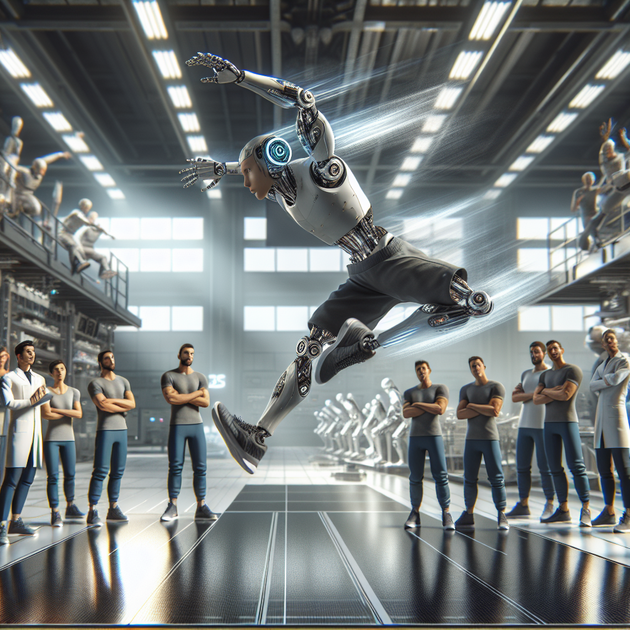What would you say if a robot could not only walk upright but also flip, jump, and recover from stumbles better than most humans? That’s exactly what’s happening right now in China—Unitree has revealed its humanoid robots training like Olympic gymnasts. These aren’t just machines; they’re self-learning athletes powered by advanced AI.
Unitree’s Humanoid Robots Take on Parkour
The primary keyword here—Chinese robots—has taken on a whole new meaning since Unitree dropped its latest demo video. In the clip, these bipedal bots aren’t just shuffling across a flat floor; they’re leaping over obstacles and landing flips with surprising grace. Their moves are powered by fast-adapting artificial intelligence that gets smarter every time the robot falls and picks itself back up.
If you haven’t heard of Unitree Robotics before, they’re a Hangzhou-based company known for pushing boundaries in the world of agile robotics. While Boston Dynamics’ Atlas might have made waves in the West for its dancing and jumping skills (see Atlas here), Unitree is putting China at the forefront of humanoid parkour.
How AI Makes These Robots Smarter After Every Fall
What sets these Chinese robots apart is their use of self-learning models. Each time one slips up during training—maybe missing a landing or wobbling off-balance—it analyzes what went wrong. The next attempt is smarter and more precise.
Here’s what makes Unitree’s approach special:
- Self-improving algorithms: The more these bots fail, the faster they learn.
- Real-time adaptation: They can adjust their motor responses instantly if terrain changes.
- Advanced sensors: Cameras and gyroscopes feed data straight to onboard AI.
- Open research: Some progress details are shared publicly to boost learning across the robotics community.
This kind of rapid feedback loop means today’s clumsy stumble is tomorrow’s flawless flip.
The Double-Edged Sword of Robotic Progress
On one hand, watching these machines perform stunts once reserved for action heroes is nothing short of amazing. For applications like search-and-rescue operations or disaster response (where human safety is at risk), having agile humanoid robots could be game-changing. Imagine sending a robot into a collapsed building to nimbly navigate debris and save lives.
But there’s another side to this story that can feel like it’s pulled straight from science fiction. When you see robots adapting on their own and getting “smarter” after each mistake, it’s hard not to think about all those movies where technology eventually decides it no longer wants to take orders from humans.
A quick look at history reminds us that every big leap in automation—from industrial assembly lines to autonomous vehicles—has sparked both excitement and nervousness. The sight of these self-correcting parkour bots raises big questions about control and oversight.
Anecdote: The First Time I Saw an Agile Robot
Years ago at a tech expo, I watched an early-generation humanoid robot try (and fail) to climb three stairs. Each crash drew nervous laughter from the crowd—until someone joked that we’d all be safe until the day one actually made it up those steps. Fast forward to today’s videos from China and it’s clear we’ve crossed that threshold; now these bots don’t just climb stairs—they leap over them.
The Road Ahead for Humanoid AI Automation
Looking forward, it’s obvious that Chinese robots—and their global competitors—are going to keep getting better at tasks once thought impossible for machines. Whether these acrobatic feats will mostly help humanity (by automating dangerous jobs) or create new challenges (by making machines more independent) remains to be seen.
For now, there are real opportunities and real concerns:
- Faster recovery from disasters with agile rescue bots
- Potential job disruption in sectors where physical agility was once unique to humans
- The critical need for ethical frameworks around autonomous decision-making
- An ongoing arms race between countries developing next-gen robotics
The latest developments might feel cool—or slightly unnerving—but there’s no doubt this is only the beginning.
What do you think? Are we witnessing an exciting leap forward with these parkour-performing Chinese robots—or should we be setting some ground rules while we still can?

Leave a Reply